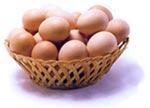Incubation Tips and Hints - Your guide to successful incubation

Eggs:
Egg Shape Eggs should be of a normal oval shape, more pointed at one end, free from abnormalities and at least 24 hours old. This is to allow an air sac to develop. Dirty Eggs - Eggs should be clean from the nest if possible. Only clean the eggs if they are heavily soiled, in water hotter than the eggs, so bacteria is not drawn into the egg. Use water laced with a disinfectant solution if possible. Ebay / Posted Eggs If the eggs have been sent by post they should be left settle for at least 24 hours prior to setting. Egg Storage Eggs should be stored at cool temperatures of around 10 degrees C, and turned once a day. We stand our eggs in trays one side resting on a block so they are at an angle of about 40 degrees, swapping the side once a day.
Setting Up:
Set up your incubator at least 24 hours before you want to set eggs.
a) So the temperature can be accurately set.
b) So any problems with the incubator can be identified before incubation starts.
c) Don’t worry about humidity at this stage, as eggs affect humidity level.
Temperatures:
Your aim is for a temperature of 37.5 °C at the centre of the egg. In a forced air incubator ( one with a fan) you need to aim for 37.7 °C , as the air temperature should be fairly constant throughout the incubator. In a Still Air incubator a temperature of 39 °C is required, as this is heated by radiated heat and there will be a temperature difference between by the element and the eggs. Follow the manufacturers instructions with regard to temperature settings. Always warm up the incubator to room temperature before switching on. In very cold weather condensation can form on components as the incubator warms up, causing short circuits not covered by guarantee!!
Incubation Room:
Your Incubator should be sited in a room with a stable temperature of 15-21°C . The temperature will never be stable if the air coming into an incubator is cold, and in some cases it will struggle to gain and hold temperature. This also puts stress on the heating element, causing it to burn out. This damage would not be covered by guarantee. The room should have an adequate supply of fresh air. Chick Embryos need oxygen to live like us!!. Be aware bad eggs smell. At some stage you will have a bad egg in your incubator. Candling eggs can reduce the risk of an egg going bad and smelling out your room!! As you can identify empty and dead embryos and remove them from the incubator
Setting your eggs:
Set your eggs as per your incubators manufacturers instructions. This will be either on their side, or point down (or more correctly air sac up). Eggs should be less than 10 days old at setting point, after this age the embryos start to die, so hatchability will drop.
Egg Turning:
Eggs need turning during incubation so the embryos do not stick to the shell. In automatic turning incubators, you need to make sure the turning mechanism is engaged. Eggs in manual turn or semi-automatic incubators need turning 180 degrees at least twice a day, preferably three times (so the eggs are on opposite sides during the long nights). It may help you turning the eggs if you mark each egg on opposite sides with an arrow pointing towards each other, so you know which way to turn the egg each day, and how far.
Humidity:
All fertile eggs are required to lose up to 14% of egg weight during incubation, through water loss. This causes the air sac to enlarge and the chick to have enough air in the air sac to grow, pip and hatch. Too much weight can be lost as well as too little, which is why humidity is controlled. The more humidity in the incubator, the less weight loss from the egg, and vice versa. Ambient humidity varies from region to region, by altitude, and by the time of year. Which makes it impossible to make a recommendation of how much water to put in any particular incubator. As a rough guide, aim for 40 % for the setting period, then increase to 60% for the hatching time. NOTE: Humidity is a cumulative effect over the whole incubation period. If the humidity goes over 75% for a day, its not going to kill all the embryos.
Candling:
Candling is like shining a bright torch through the egg to check embryo development. It allows the removal of clear (infertile) eggs, and you can even see the chick moving inside!. It also reduces the risk of eggs going bad an exploding! I would recommend candling at 10 and 18/9 days.
Hatching:
Three days prior to the incubation period finishing, stop turning the eggs. At this stage transfer them to the hatcher if you have one or leave in the incubator. This allows the chicks to orientate themselves prior to hatching. On the day before hatch day, they will break into the air sac of the egg, and start to breathe. At this stage you may hear cheeping. Then using an egg tooth on their beak they start to break out of the shell. The first hole is known as the pipping stage. Hatching can take up to 48 hours from breaking into the air sac to getting out. Leave the chicks in the incubator for at least 24 hours, until fluffy. I would recommend waiting until a majority have hatched. The moisture drying off the hatched chicks helps the other chicks to hatch, so do not be in a hurry to remove them.
Useful Links;
Allotment Garden Poultry - Help and information on keeping chickens and other poultry at home. Click here
Chicken Keeping Courses - Bury Green Poultry . Click here